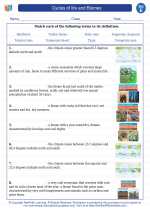What is an Ecosystem?
An ecosystem is a complex web of interactions between living organisms and their environment. It includes both biotic (living) and abiotic (non-living) components that influence each other. Examples of biotic components are plants, animals, and microorganisms, while abiotic components include sunlight, water, and soil.
Types of Ecosystems
Ecosystems can be classified into various types, such as terrestrial (land-based) and aquatic (water-based) ecosystems. Terrestrial ecosystems include forests, grasslands, and deserts, while aquatic ecosystems encompass ponds, lakes, rivers, and oceans.
Components of an Ecosystem
The components of an ecosystem can be categorized as producers, consumers, and decomposers. Producers, such as plants, are able to make their own food through photosynthesis. Consumers, including herbivores and carnivores, obtain energy by consuming other organisms. Decomposers, like bacteria and fungi, break down dead organisms and waste, returning nutrients to the soil.
Energy Flow in Ecosystems
Energy flows through ecosystems in a one-way direction. Producers capture sunlight and convert it into chemical energy through photosynthesis. This energy is then transferred to consumers as they feed on producers or other consumers. Energy is eventually lost as heat as it moves through the different trophic levels of the food chain.
Interactions in Ecosystems
Organisms within an ecosystem interact with each other in various ways, such as through predation, competition, and symbiosis. Predation involves one organism (the predator) consuming another (the prey), while competition occurs when organisms vie for the same resources. Symbiotic relationships, like mutualism and parasitism, involve close interactions between different species.
Human Impact on Ecosystems
Human activities, such as deforestation, pollution, and climate change, can have significant impacts on ecosystems. These activities can lead to habitat destruction, loss of biodiversity, and disruptions in the balance of ecosystems. Understanding and mitigating these impacts is crucial for the conservation and sustainability of ecosystems.
[Ecosystems] Related Worksheets and Study Guides:
.◂Science Worksheets and Study Guides Fifth Grade. Cycles of life and Biomes

 Worksheet/Answer key
Worksheet/Answer key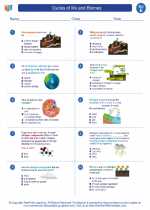
 Worksheet/Answer key
Worksheet/Answer key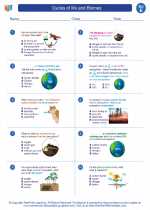
 Worksheet/Answer key
Worksheet/Answer key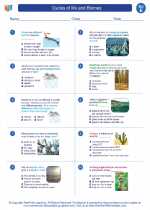
 Worksheet/Answer key
Worksheet/Answer key
 Vocabulary/Answer key
Vocabulary/Answer key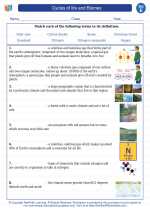
 Vocabulary/Answer key
Vocabulary/Answer key